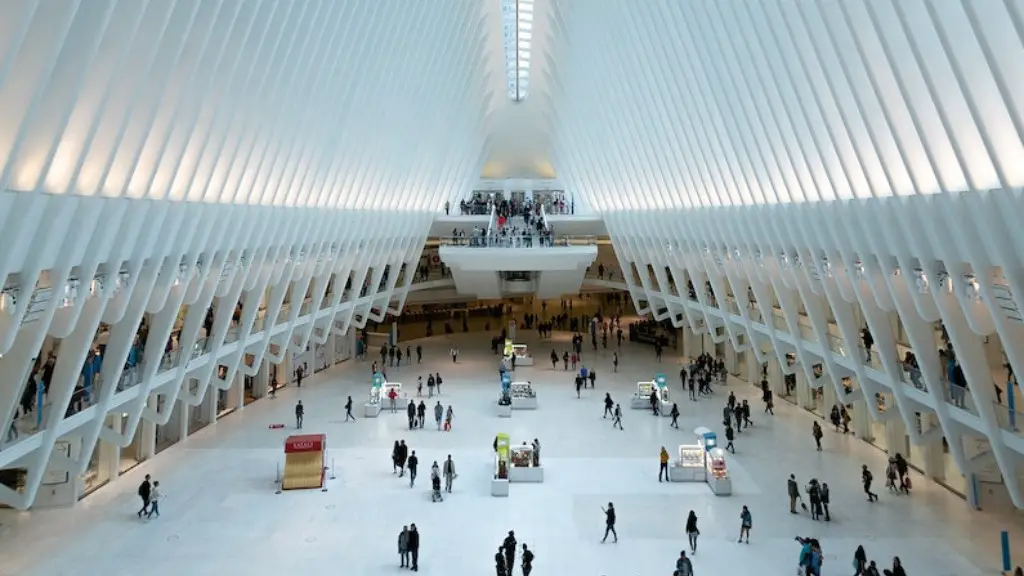History Of Architecture
Architecture has been around for centuries and is a creative art derived from human cultures, styles, and values. Throughout the history of architecture, architects have used unique building techniques and materials which have developed over time to meet the changing needs of society.The history of architecture is important because it provides insight into how our world has evolved and how architecture has adapted to meet changing needs.We can trace the roots of modern architecture back to Ancient Greece and Rome, where architects developed a style known as Classical Architecture that focused on symmetry, harmony, and proportion. This style is still popular today and is seen in many buildings around the world.
Over the centuries, architecture has taken on many forms and styles, ranging from the grandeur of Baroque and Gothic, to the sleek lines of Modernism. By understanding the history of architecture, we can gain insight into the development of styles, materials, and techniques over time. We can also examine how the architectural needs of societies have changed throughout the ages.
In the present day, architecture is much more than just a form of art. Architects must use their creative skills to design buildings which are functional, sustainable and aesthetically pleasing. This involves considering many different factors such as climate, technology, materials, and costs. By understanding how architecture has evolved over the centuries, architects can be better prepared to plan and design buildings that meet today’s needs.
Architects also need to consider the impact of their work on the environment. With climate change and global warming posing significant risks, architects need to be aware of the impact that their designs will have, and strive to create buildings which are energy-efficient and sustainable.
Furthermore, those studying architecture benefit from understanding the history of the subject. Being aware of the previous movements and styles, as well as innovations that have been made, can be a great way to find inspiration and to come up with new ideas. History can provide valuable guidance on how to approach certain problems and create solutions which are in line with the needs of our time.
Arts & Crafts Movement
The Arts & Crafts Movement began in the late 19th century as a reaction to the Industrial Revolution. This movement was a shift towards designing more natural objects which were made to last, rather than designing mass-produced, disposable items. Part of the movement was to focus on craftsmanship and skill in the design of objects, rather than simply relying on the power of machinery. This movement was influential in changing the way that people view design and has shaped the way that architects design buildings today.
Part of the Arts & Crafts Movement was the re-discovery of traditional building techniques, and a return to natural materials. This has led to a resurgence in the use of locally-sourced, sustainable materials such as timber and stone. This focus on sustainability has helped architects to create buildings which are much better for the environment.
The Arts and Crafts Movement has also had a great influence on the aesthetics of architecture. This includes an emphasis on simplicity and natural forms, as well as an appreciation for craftsmanship and handmade objects. This has led to a greater appreciation for fine details, such as intricate woodwork and hand-crafted stone elements.
Contemporary Architecture
The last century has seen a shift towards contemporary architecture, which is focused on creating unique, modern forms and spaces. This type of architecture is often a combination of traditional and modern materials, and can be seen in many public buildings and private homes today.
Modern materials have allowed architects to create buildings with a minimal environmental footprint, which are also aesthetically pleasing. Commonly used materials include glass, metal, and concrete, which are both lightweight and durable. High-tech materials such as carbon fiber and 3D printing can also be used to create unique shapes and forms.
Many modern buildings also embrace technology, with smart features such as automated climate control and voice-controlled lighting. By utilizing the right technology, architects can create buildings which are both functional and energy-efficient.
Green Architecture
One of the major trends in architecture today is green architecture, which is focused on sustainability and energy efficiency. Green architecture combines energy-efficient building materials and designs with environmentally friendly building practices.
The goal of green architecture is to reduce the environmental impact of buildings, and to maximize energy efficiency. This includes things such as using renewable energy sources, sourcing materials from sustainable sources, and using building techniques which minimize waste.
One example of green architecture is the use of green roofs, which are roofs which are covered with plants and vegetation. These roofs help to insulate buildings, reduce energy costs, and create habitats for local wildlife. Green walls, which are walls covered with plants, can also help to create a healthy living environment.
Use of Digital Technology
Over the last few decades, technology has had huge influence on the way that architects design buildings. The use of digital tools such as 3D design software and photorealistic rendering software has allowed architects to create highly detailed buildings which are visually stunning.
The use of digital tools also allows architects to analyze the environmental impact of their designs, predict the energy efficiency of buildings, and test out different building materials and designs.
One example of the impact of digital technology is the use of Building Information Modeling (BIM). This digital tool allows architects to create an immersive 3D model of a building and its components. This digital model can be used to evaluate the energy efficiency of a building, as well as its structural integrity.
3D Printing in Architecture
3D printing technology has revolutionized the way that architects design buildings. Architects can use 3D printing to quickly create physical models of their designs, and can also use the technology to create unique building components such as panels, floors, and ceilings.
3D printing can also be used to create custom-made furniture components, as well as highly detailed, one-of-a-kind pieces. This technology has opened up many new possibilities for architects, allowing them to create buildings with unique shapes and features which were not possible before.
Another advantage of 3D printing is the speed at which it can be used. This technology can create complex building components in a fraction of the time it would take to construct them traditionally. This has made it easier and faster for architects to realize their designs.
Adaptation To Changing Needs
Architecture must constantly adapt to the changing needs of society. With every generation and era, there is a unique set of requirements for buildings, and architects must be aware of these needs in order to design effective and functional buildings.
For example, the past century has seen a shift towards the creation of energy-efficient and sustainable buildings, which must be designed with care to ensure the highest levels of energy efficiency. Architects must also be aware of the changing trends and desires of their clients, in order to plan and design buildings which are both aesthetically pleasing and functional.
In addition to these changes in technology and techniques, architecture must also keep up with the shifting values and preferences of society. Trends such as minimalism and green architecture require architects to be aware of the ecological, cultural, and societal impact of their designs.
Community Involvement
Architecture is also a form of community-building, and architects must be aware of the needs of the people in the local area. Community input is essential when it comes to planning and designing buildings, and architects must ensure that the designs reflect the values, needs, and desires of the people in the local area.
Furthermore, architecture can be used as a tool for social change. Architects must be aware of the political and social environment, in order to create buildings that not only look good, but also help to improve the lives of the people in the local community.
Architecture is an incredibly important part of our lives, and understanding the history of the profession is an essential part of being an effective architect. By understanding the trends, styles, and techniques which have developed over time, architects can be better prepared to create buildings which meet the needs of today’s society.


